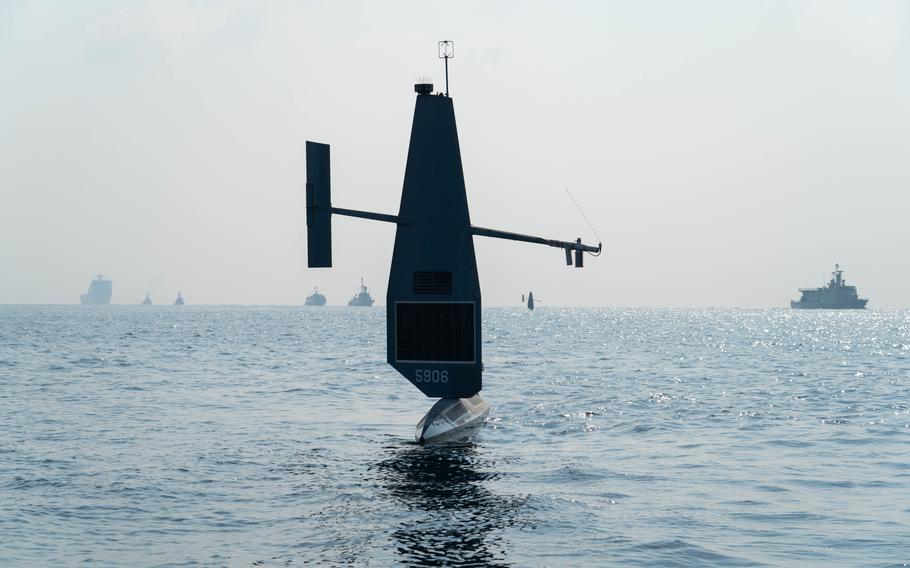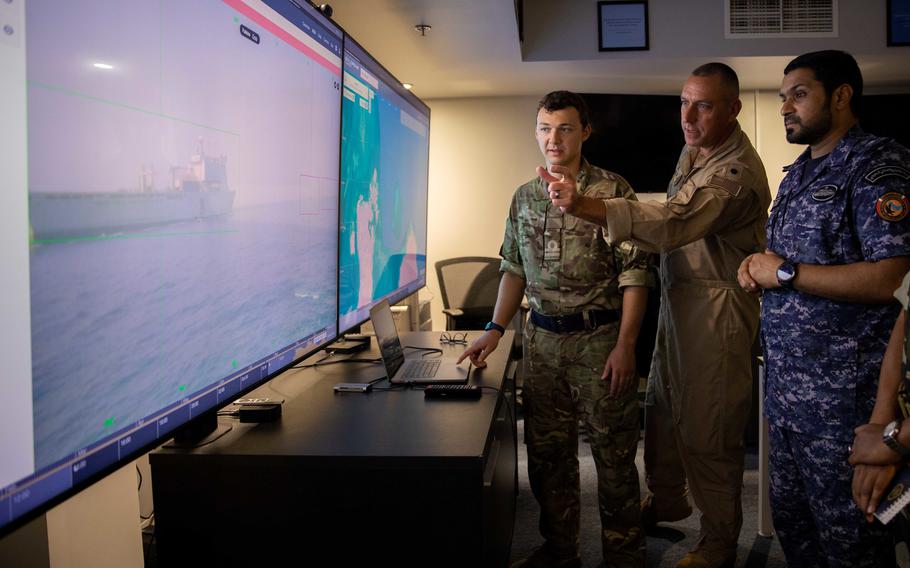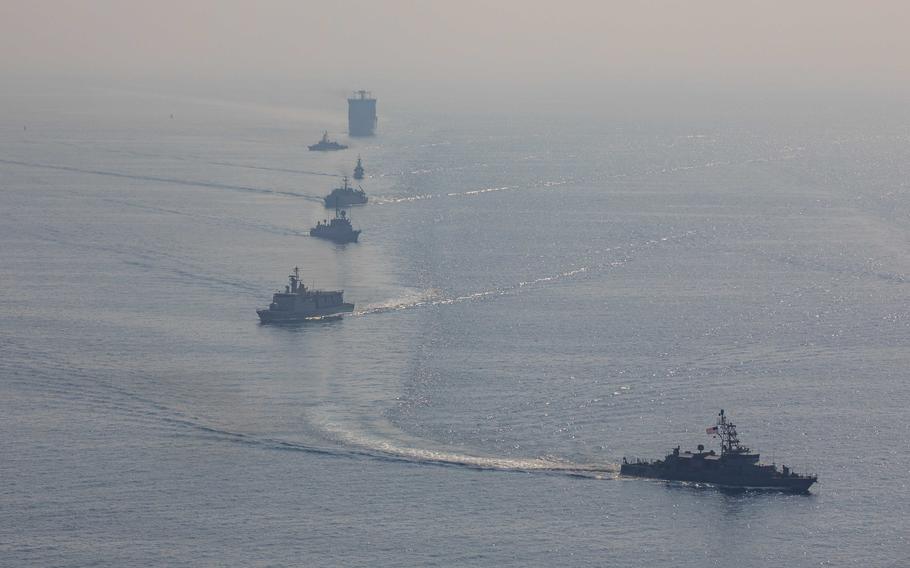
A U.S. Navy drone operates with ships from the U.S., Britain, Bahrain and Saudi Arabia in the Persian Gulf on Oct. 26, 2022. (Noah Martin/U.S. Army)
The Navy’s aquatic drones had to up their game this week in the largest exercise so far of unmanned vessels operating with crewed ships of different countries from the Middle East, the Navy’s 5th Fleet said Thursday.
Three unmanned surface vessels, also known as sail drones, and seven manned ships from four countries participated in the exercise, which took place in the Persian Gulf on Wednesday, a fleet spokesman said.
The Navy hopes these unmanned vessels can help patrol the vast waters of the Middle East, through which much of the world’s trade transits.
“When you can integrate new technology like unmanned surface vessels alongside crewed ships, it allows for you to strengthen the way (you) work together,” said Cmdr. Timothy Hawkins, a spokesman for the Navy’s 5th Fleet, based in Bahrain.

Personnel from U.S. 5th Fleet and Combined Task Force 152 monitor visuals transmitted from an unmanned surface vessel Oct. 26, 2022. During the exercise, the drones operated in conjunction with crewed ships from four navies. (Bryan Clay/U.S. Army)
The unmanned surface vessels, known as Saildrone Explorers, are commercially available watercraft that are powered by wind and solar panels. They resemble a torpedo with a 15-foot-tall shark fin.
The drones searched for a British ship and relayed imagery back to both ships in the area and to an operations center in Bahrain helmed by Task Force 59, a unit formed last year to work with 5th Fleet’s unmanned surface, underwater and aerial systems.
Wednesday’s drill followed one earlier this month that involved two American and two British manned warships alongside the three boat drones.
This time, two ships each from the U.S., Bahrain and Britain as well as one ship from Saudi Arabia participated in the exercise along with the three drones, Hawkins said.
The international naval grouping that launched the exercise, Combined Task Force 152, is responsible for protecting key maritime infrastructure, including oil platforms, in the gulf between Iran and Saudi Arabia. The drill comes as Iran has gained prominence for its unmanned technology, specifically the aerial drones it is supplying to Russia for use in the war in Ukraine.
The drones used in Wednesday's drill were the same type as those seized by Iran on separate occasions in August and September. In both instances, Iranian sailors released the drones as U.S. warships neared.

Ships from the navies of the U.S., Bahrain, Saudi Arabia and the United Kingdom sail in formation in the Persian Gulf on Oct. 26, 2022. (Aaron Troutman/U.S. Army)